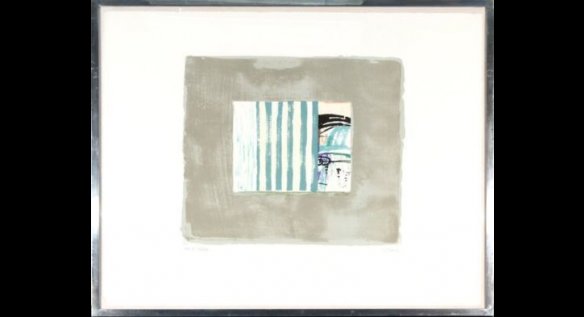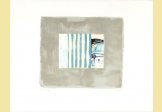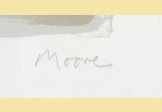Hiding Eye
| Artist | : | Henry Moore |
| Medium | : | Lithograph |
| Size unframed | : | 14.25"/12.75" |
| Size framed | : | N/A |
| Signature Info | : | Hand Signed - By the artist |
| Frame Info | : | Yes |
| Condition | : | Very Good |
| Year | : | 1974 |
Description
Very rare, limited edition lithograph by Henry Moore, this is one from a set of 5, and limited to 50. Having seeing some of the others, they all appear to be in different shades. You can see the full set by following the link below, to the Tate. You are unlikely to have the opportunity to buy one of these again, as most are in private collections. Very good investment, as value will only go up. I am also offering a second print separately.
HENRY MOORE BRITISH 1898-1986 , "Helmet Head", 1974 , Lithograph in colours , 12 3/4 x 14 1/4 in (32.4 x 36.2 cm) , pencil signed lower right , edition PL.3, 27/50 On Saunders paper, published by Gérald Cramer, Geveva, 1975, the full sheets, each lithograph signed in pencil and numbered,
https://www.tate.org.uk/art/artworks?gid=65409!&ws=acno&wv=list
'The Helmet Head subject of a form enclosed within an outer form mysteriously concealed and protected is one that has fascinated me for over thirty years' (Henry Moore, Introduction of Helmet Head Lithographs, 1975)
Henry Moore first explored this subject in 1939 when he made a lithograph titled 'Spanish Prisoner' (Cramer 3) in aid of the Spanish Republican Army prisoners. One year later he would make The Helmet, his first sculptural form to show the enclosure of one form within another. After that, he wouldn't revisit this subject again until 1975 when he made this portfolio.
The actual idea for this present series arose when Moore was working on some drawings of sculpture ideas for a Helmet Head. He was not happy with the drawings and decided to tear them up. Some of the torn pieces showed a single eye which Moore found more expressive and interesting than the two eyes had revealed.
'Looking at torn pieces I found that each isolated eye had a different expression - one was a wild eye, nearly a mad eye, another a contemplative eye, another expressed wonder, a superiority, and so on.' (Henry Moore, Introduction of Helmet Head Lithographs, Grald Cramer, Geneva, 1975)
This set of lithographs was then based on these torn fragments and as Moore explains in the introduction of the portfolio: 'Whilst working on these new prints I surrounded the head fragment with frames or window openings, to give them the suggestions of soldiers observing the enemy from concealed positions behind battlements'.
Henry Moore was born on 30 July, 1898, in Castleford, Yorkshire. He was the seventh child in a family of 8 children. His father worked in a colliery in Castleford but wanted his children to avoid working down the mines, so as much as possible given the family's poverty, the children were educated at a local school.
It was in his teenage years that he developed an interest and talent in art. This helped him to get a scholarship to Castleford Secondary school. Aged 18 he was called up to the army and in 1917 was injured during a gas attack at the Battle of Cambrai. After his injury, he spent the remainder of the war behind the line training new recruits. Moore later said the war was for him not a traumatic experience - unlike that of many of his contemporaries.
After the war, he continued his education and in 1921 won a scholarship to study at the Royal College of Art. Henry Moore was a talented student, but already he was experimenting with new styles and this often conflicted with his teachers who were trying to teach the classic style - of perfection in form and composition. Moore was attracted to a more spontaneous art form with imperfections evident in the sculpting. In 1924, he spent time travelling in Italy and later Paris. Here he could view the great Masters such as Michelangelo and Giovanni Pisano. But, Moore was also influenced by his studies of primitive art, and at the Louvre he was particularly influenced by the Toltec-Maya sculptural form, the Chac Mool.
On his return to London, he took up a teaching post at the Royal College of art. This part time post enabled him to work on his own art, leading to his first commissions such as the West Wind - 1928-29.
In the 1930s, Moore became an active member of the informal modern art movement, centred around the ideas and innovation of people like Pablo Picasso and Jean Arp. He also briefly flirted with the surrealist movement.
The Second World War led to more traditional commissions and Moore worked as a war artist producing memorable pictures such as images of civilians fleeing the Blitz in the London underground.
This helped Moore's reputation and after the war led to numerous awards and opportunities in America. In 1948 he was awarded the International Sculpture Prize at the Venice Biennale. Significant commissions included
A reclining figure for UNESCO building in Paris 1956
A Nuclear energy sculpture at the University of Chicago. (to commemorate 25th anniversary of nuclear reaction)
Knife Edge – Two Piece in 1962 for College Green, London around Houses of parliament.
In 1972, Henry Moore established his Henry Moore Foundation - a charitable trust to promote art education and the support of young artists. He was a man of modest means. Despite his wealth and fame he lived frugally remembering his Yorkshire roots. He even turned down a knighthood in 1951 because he didn't want to be seen as an establishment figure. Yet, during his lifetime he did become the dominant sculpture of his generation.





